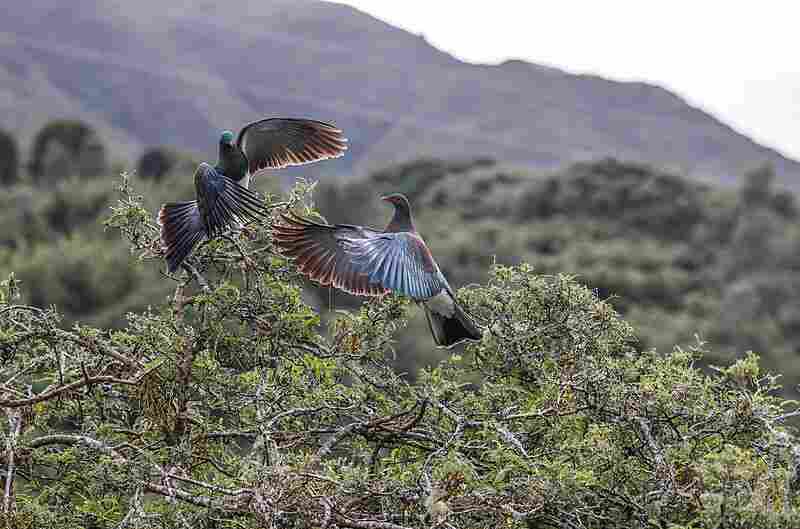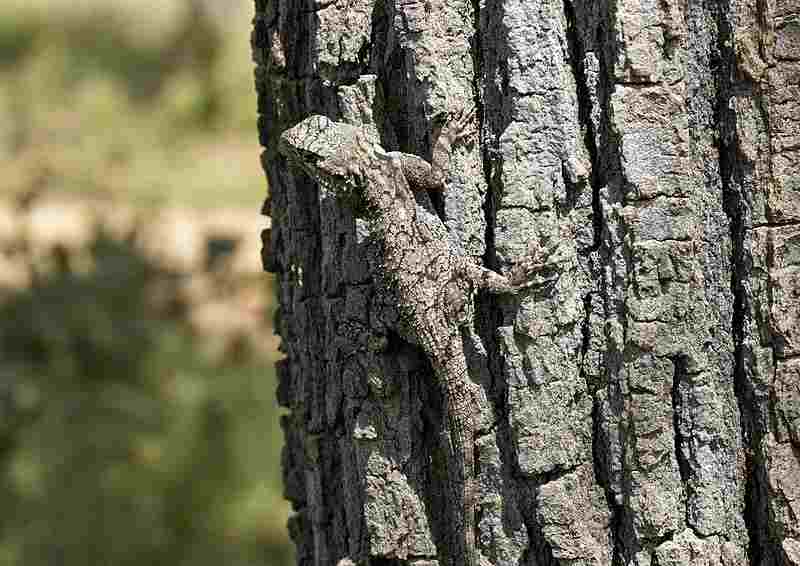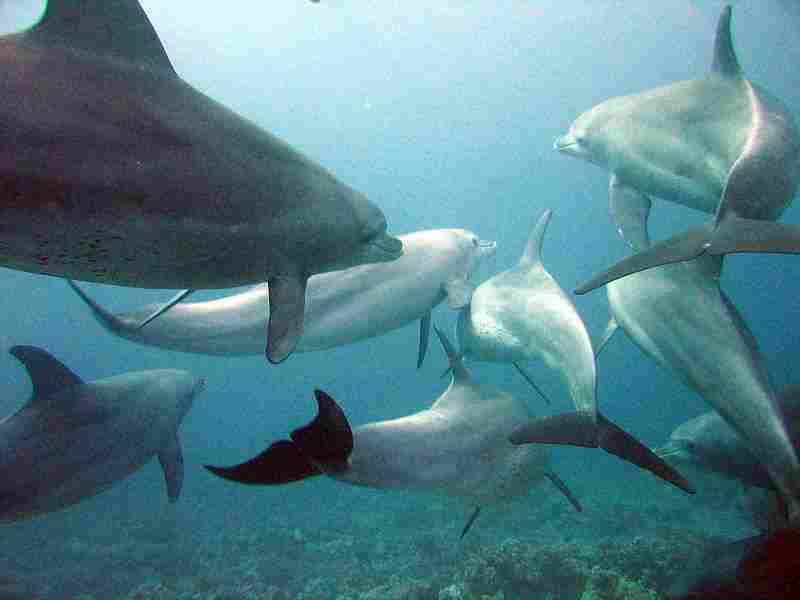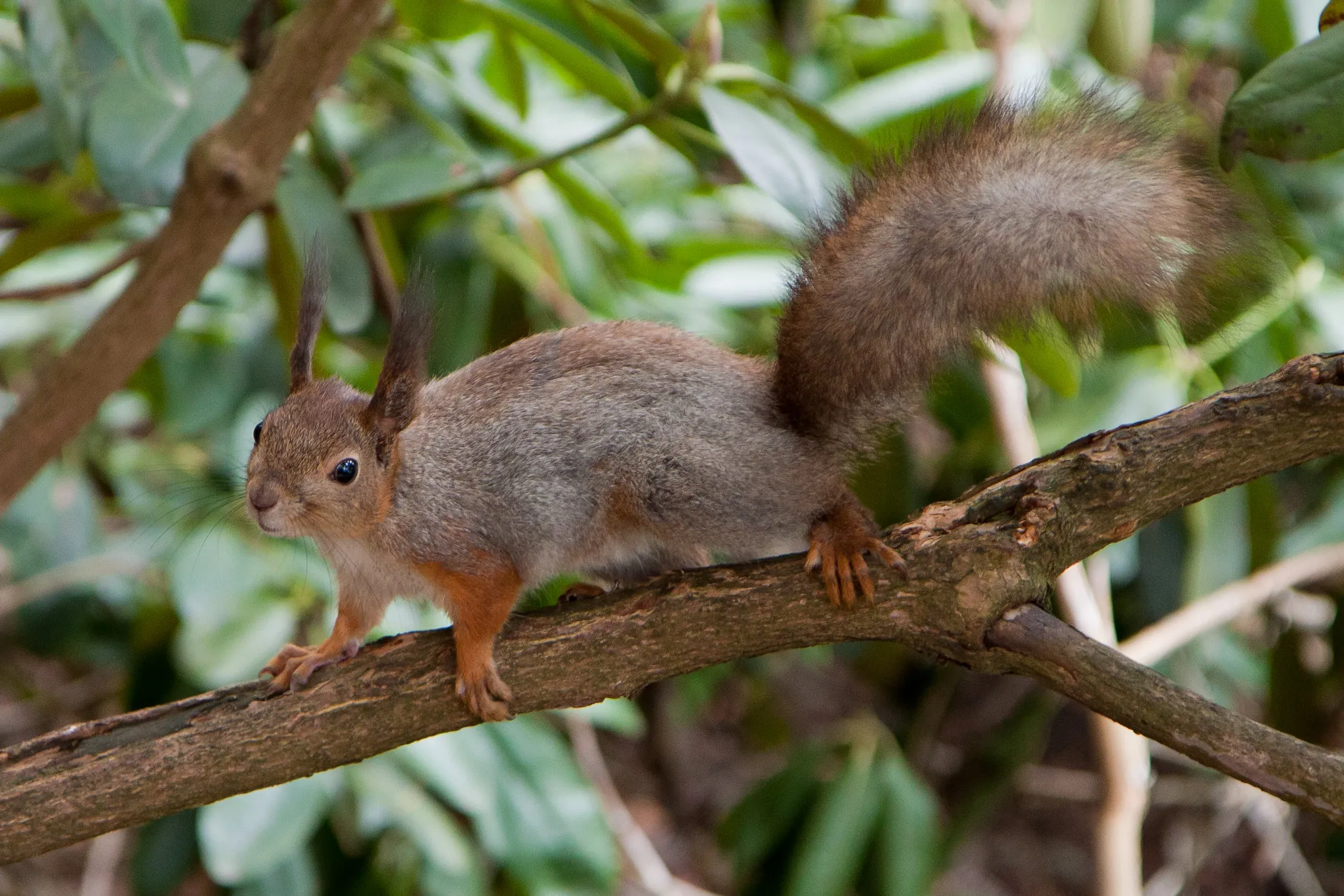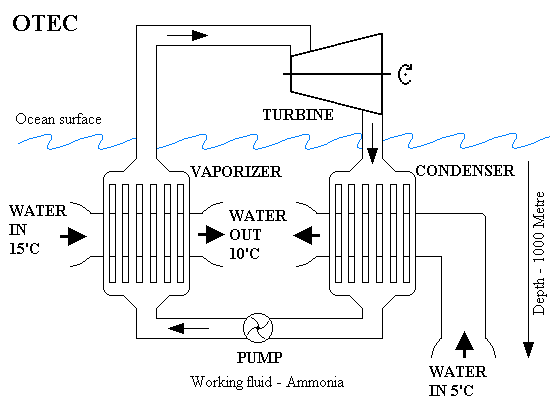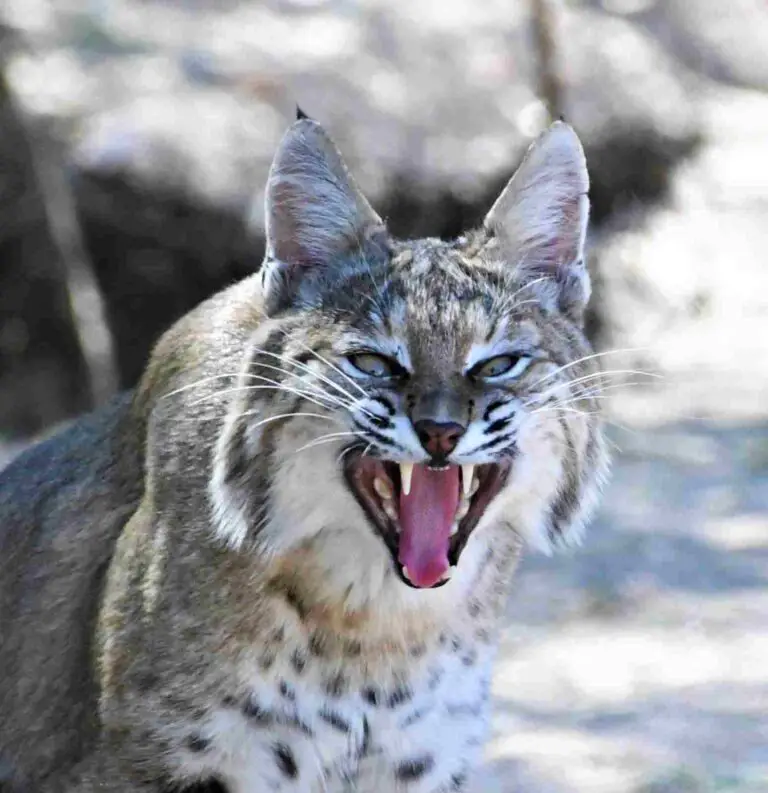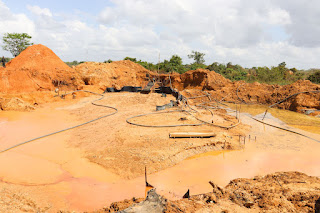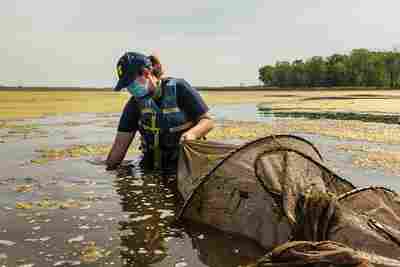7+ Biotic Factors that Affect Population Discussed
Biotic factors that affect population include competition, primary production, seed dispersal, natality, predation, pathogenic diseases, adaptation, and human impacts.
This article discusses biotic factors that affect population, as follows;
1). Competition: One of the Biotic Factors Affecting Population
Competition is a fundamental biotic factor that is crucial in shaping the dynamics and trophic structure of populations within various ecosystems.
In ecology, competition simply refers to the struggle between individuals or species for limited resources, such as food, water, territory, and mates. It is a major driver of population dynamics and has significant implications for the abundance and distribution of species within a habitat.
Significance of Competition in Ecosystems
The significance of competition in ecosystems can be traced to phenomena like; resource partitioning, population regulation, community structuring, and evolutionary pressures.
Competition fosters resource partitioning, where species occupying similar ecological niches evolve to utilize resources differently. This promotes coexistence by reducing the intensity of direct competition, enhancing biodiversity, and maintaining ecological equilibrium.
Population size can be regulated through competition. Intraspecific competition (competition within a species) can limit population growth, thereby preventing overpopulation (which can cause overexploitation of resources) and stabilizing population sizes.
Competition influences the composition and diversity of an organic community. Species that are better adapted to exploit available resources tend to outcompete others, thereby shaping the composition of the community.
Lastly, competition exerts evolutionary pressure on species, by driving adaptations that enhance their competitive advantage. This leads to the development of traits that improve resource acquisition, survival rates, and ecological sustainability.
Mechanisms of Population Alteration through Competition
Some mechanisms by which competition affects the population dynamics of ecosystems include; resource depletion, territoriality, exploitative competition interference, niche differentiation, density-dependent effects, and evolutionary adaptation.
Interspecific competition (competition between different species) often involves the depletion of shared resources. As one species consumes resources, the availability of those resources decreases, affecting the population dynamics of both competing species. This can lead to shifts in population sizes and distributions.
Many organisms are territorial, defending specific areas for resources, nesting sites, or mates. Competition for territories can lead to the displacement or exclusion of less-resilient individuals from certain areas, thereby affecting population distributions.
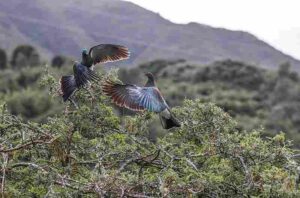
Exploitative competition can be said to occur when one species outcompetes another by consuming resources more efficiently or rapidly. This may lead to reduced resource availability for the outcompeted species, ultimately resulting in decreased reproductive success and population decline.
Interference competition involves direct interactions occurring between individuals or species, that hinder the ability of others to access resources. This may include aggressive behavior, such as territorial disputes or physical interference, which can impact population dynamics.
In response to competition, species may evolve different ecological niches, enabling them to coexist by utilizing resources in distinct ways. This can lead to niche differentiation and reduced competition, allowing multiple species to inhabit the same ecosystem.
As population density increases, competition intensifies. Intraspecific competition can lead to density-dependent impacts, such as reduced reproductive success and increased mortality rates when populations become too large for available resources.
Over time, competition can drive evolutionary adaptations that enhance a species' resilience and ability to compete for resources. This can include the development of specialized structures, behaviors, or foraging strategies that provide a competitive advantage.
2). Primary Production
Primary production; the process by which autotrophic organisms such as plants and algae convert solar energy into organic biomass through photosynthesis, is an important biotic factor that significantly influences the dynamics of populations within ecosystems.
It provides the trophic foundation of the food web, supporting the growth and reproduction of heterotrophic organisms, and defining the distribution and abundance of different species within an ecosystem. This section delves into the significance of primary production and its mechanisms of population alteration in various ecological environments.
Significance of Primary Production in Ecosystems
Factors that point to the significance of primary production with regards to population dynamics include; energy resource provision, biodiversity, and population regulation.
Primary production serves as the main source of bioenergy in ecosystems. Autotrophic organisms capture light energy from the sun and convert it into organic matter, which is subsequently transferred to herbivores and further up the food chain to carnivores. It sustains the energy transfer dynamic within the ecosystem.
The presence of primary producers (plants, phytoplankton, photosynthetic bacteria) as a food resource, directly impacts herbivorous and omnivorous populations. Adequate primary production provides the foundation for the growth and reproduction of these consumers.
Also, the amount and diversity of primary producers in an ecosystem can influence species richness and diversity. Ecosystems with high primary production rates, often support a greater number of species because of the availability of resources to support a broad span of trophic levels.
Variability in primary production can lead to fluctuations in herbivore populations. In abundant periods, herbivores may experience population growth, while in lean periods, their populations may decline due to reduced food availability.
Mechanisms of Population Alteration through Primary Production
Some of the mechanisms by which population is altered through primary production include; bottom-up regulation, resource supply changes, trophic cascades, and seasonal variability.
Primary production regulates populations from the basal level of the food web and upwards. Variations in the availability of primary producers therefore, directly impact the abundance and distribution of herbivores and, subsequently, carnivores/omnivores. If primary production increases, herbivore populations may grow, in turn leading to increased predator populations.
The rate of primary production in an ecosystem influences the growth, reproduction, and survival of herbivorous populations. High primary production rates support larger herbivore populations, while low primary production can limit their growth and, in turn, the populations of higher trophic levels.
As the factors discussed so far imply, primary production can initiate trophic cascades within ecosystems. For example, an increase in primary production can lead to higher herbivore densities, which may consume more plant matter. This, in some cases, may eventually lead to a decrease in plant populations, affecting the abundance of both herbivores and carnivores.
Primary production often exhibits seasonal variability due to the instability of abiotic factors like sunlight, temperature, and nutrient availability. These variations can impact population dynamics, leading to seasonal changes in the abundance of species that depend on primary production as a food-generating process.
In some cases, primary production can be a driver of intraspecific and interspecific competition. Limited access to autotrophic resources can result in competition among individuals and species for access to these vital resources, influencing population sizes and distribution patterns.
3). Seed Dispersal: One of the Biotic Factors Affecting Population
Seed dispersal is an important biotic factor that, to a large extent, defines the dynamics of plant populations and, indirectly, the populations of animals that rely on them for food or habitat.
The movement of seeds from one location to another, often facilitated by various biotic agents, is essential for plant survival, reproduction, and the overall trophic structure of ecosystems. This section addresses the significance of seed dispersal and its mechanisms of population alteration in ecosystems.
Significance of Seed Dispersal in Ecosystems
Significance of seed dispersal in ecosystems can be traced to factors and phenomena such as; plant colonization, genetic diversity, resource availability, food sources, and habitat formation.
Seed dispersal enables plants to colonize new areas. This is particularly vital for pioneer species that establish themselves in disturbed or barren environments, where they contribute to ecological succession.
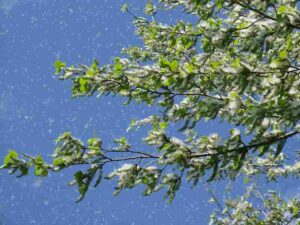
Dispersal allows for gene flow between plant populations. This promotes genetic diversity, which can enhance the adaptability of plant populations to changing environmental conditions.
The establishment of new plants in different locations can provide a continuous supply of resources, such as food, shelter, and breeding sites, for various animal species, thereby impacting their population sized and distribution.
Many animals, including herbivores and omnivores, rely on the fruits and seeds of plants as a food source. Seed dispersal facilitates a steady supply of these resources, thereby impacting the abundance and biological success of such consumers.
Lastly, certain plants provide habitats and nesting sites for birds and other animals. Seed dispersal is instrumental in creating and maintaining these habitats, thereby affecting the populations of species that rely on them.
Mechanisms of Population Alteration through Seed Dispersal
Through seed dispersal, populations in ecosystems can be affected in diverse ways that can be described in terms of plant colonization, gene flow, consumer-plant interactions, invasive species, plant succession, and pollinator interactions.
Seeds are transported to new areas where they can germinate and establish new plant populations. This process can lead to the expansion of plant populations in previously unoccupied or disturbed ecozones.
Gene flow between plant populations can be facilitated by seed dispersal, which can affect genetic diversity within and between populations. This genetic exchange can influence the adaptability of plant populations to environmental impacts and changes.
Seed-dispersing animals, such as frugivores (fruit-eating animals) or granivores (seed-eating animals), are instrumental in plant-animal interactions. These interactions affect both plant and animal populations. For instance, the resilience and adaptation of seedlings may depend on the behaviors of seed-dispersing animals.
Also, seed dispersal can contribute to the spread of invasive plant species, which may compete intensely with native plants and disrupt local ecosystems. Invasive plants may become dominant, thereby altering the structure and composition of plant communities.
Seed dispersal can influence the successional stages of plant communities within ecosystems. Pioneer species often rely on seed dispersal to establish themselves in disturbed areas, while later-successional species may depend on different mechanisms for persistence and regeneration.
Some plants require specific pollinators for successful reproduction. Seed dispersal can affect the populations of both these plants and their pollinators, as well as the interactions between them.
4). Natality
Natality, also known as birth or reproduction rate, is an biotic factor that exerts significant influence over the dynamics of populations within ecosystems.
It represents the number of new individuals that are born within a population during a specific period. Natality is a critical component of population ecology, and understanding both its significance and mechanisms is an essential step for evaluating the growth and structure of populations in various biomes.
Significance of Natality in Ecosystems
The significance of natality in ecosystems is hinged upon concepts and phenomena like; population growth, genetic diversity, trophic interactions, and community structure.
Natality is a key driver of population growth. It determines the rate at which a population increases in size. High natality can lead to population growth, while low natality can result in a stable or declining population.
The offspring that are produced within the context of natality, introduce genetic diversity into a population. This diversity is essential for adaptation to changing environmental conditions and enhances the long-term viability of a population.
Also, the birth of new individuals affects the availability of food resources and, in turn, influences the populations of consumers within the ecosystem. High natality in one predatory species can lead to increased predation pressure on its prey.
The reproduction rate of one species can impact the abundance and distribution of other species within the same community. Changes in natality can lead to changes in the relative proportions of different species, affecting community structure.
Mechanisms of Population Alteration through Natality
Mechanisms and other phenomena that link population alteration to natality include; reproductive strategies, environmental factors, predator-prey dynamics, competition, mutualistic relationships, intraspecific and interspecific interactions, as well as human impacts.
Different species employ various reproductive strategies, such as r-selection (producing many offspring with minimal parental care) or K-selection (producing fewer offspring with substantial parental care). These strategies directly influence natality rates and the survival of offspring.
Natality rates can also be influenced by environmental conditions, including the availability of resources, climate, and habitat suitability. Favorable conditions can lead to increased natality, while unfavorable conditions can reduce it.
Predator populations are under the strong influence of natality in prey species. For example, an increase in the birth rate of prey can lead to more food resources for predators, potentially leading to increased predator populations.
High natality within a species can intensify intraspecific competition for resources. This can lead to increased mortality among the young and may even result in density-dependent regulatory changes of birth rates.
Natality can be influenced by mutualistic interactions that occur within ecosystems. For example, pollinators can enhance the reproduction of flowering plants while gaining food resources, leading to increased natality in both plant and pollinator populations.
Also, natality rates can be influenced by both intraspecific (within a species) and interspecific (between different species) interactions. Intraspecific competition can affect reproductive success, while interspecific interactions, such as predation or mutualism, can indirectly influence reproductive outcomes.
Lastly, human activities and their repercussions, such as urbanization, habitat alteration and environmental pollution, can affect natality in various species. For instance, some pollutants can disrupt reproductive processes, leading to decreased natality in affected populations.
5). Predation: One of the Biotic Factors Affecting Population
Predation, which is simply the act and process of one species (called the predator) feeding on another (called the prey), is another fundamental biotic factor that has a profound impact on the composition and dynamics of ecological populations.
It is a critical driver of population regulation and very instrumental in defining the composition and spatial distribution of species in ecological communities.
This implies that understanding the significance of predation and its mechanisms in ecosystems is an essential step for comprehending the complex interactions that occur among species and their coexistence. Discussions here ate aimed at achieving such understanding.
Significance of Predation in Ecosystems
The significance of predation in ecosystems can be linked to functions and phenomena like population control, regulation of prey behavior, maintenance of biodiversity, and energy transfer.
Predation functions as a natural control mechanism for prey populations. It prevents prey species from overpopulating and causing resource depletion, which means that it directly contributes to the sustainability of ecosystems.
The presence of predators can influence the behavior of prey species. Prey may alter their foraging strategies, habitat use, as well as daily routines in order to minimize the risk of predation, which, in turn, can affect the abundance, diversity and distribution of plants and other species in the ecosystem.
Predation is effective in maintaining species diversity within ecosystems. Predators target specific prey species, and help to prevent the dominance of a single species while promoting the coexistence of multiple organic groups.
Lastly, predation facilitates the flow of energy through ecosystems. The consumption of prey by predators transfers energy up the trophic levels of the food chain, thereby sustaining organisms in higher trophic levels and influencing the abundance of consumers at various trophic positions.
Mechanisms of Population Alteration through Predation
Mechanisms by which predation alters population dynamics in ecosystems include; prey mortality, predator-prey dynamics, prey adaptations, coevolution, and trophic cascades among others.
Predation typically results in the direct mortality of prey individuals. This can lead to fluctuations in prey populations, as the rate of predation may vary seasonally or in response to changes in predator abundance.
The abundance of prey populations can influence predator populations and vice versa. For instance, a decline in prey abundance may result in reduced food availability for predators, affecting their vitality, productivity and survival rates.
Prey species tend to develop various adaptations to avoid or deter predators. These adaptations include camouflage, warning coloration, toxic/odorous secretions, and physical structures that make them less vulnerable to predation.
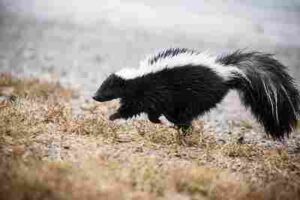
Predation can drive coevolution between predator and prey species. As predators become more efficient at capturing prey, prey species may also evolve to better conceal or defend themselves against predation. This coevolutionary trend can lead to constant adaptive change in both predator and prey populations.
Trophic cascades can be triggered by predation, where changes in one population lead to cascading effects on other species in the ecosystem. For example, a decline in predator populations can result in increased herbivore populations and reduced plant abundance.
As stated earlier, predation influences the composition and areal distribution of species within a community. The presence or absence of predators can define the relative proportions of various species, and influence community diversity.
In addition, unsustainable human activities, such as overfishing, deforestation, land conversion, and the introduction of invasive species, can disrupt predator-prey relationships within ecosystems, leading to altered population dynamics and resource-related imbalances in food webs.
6). Pathogenic Diseases
Pathogenic diseases, which are caused by microorganisms such as bacteria and viruses, constitute a significant biotic factor that can impact the dynamics and vitality of populations within ecosystems, in a profound manner.
These diseases can affect a wide range of organisms, including plants, animals, and even humans, and can act as drivers of population alterations, changes in community structure, and ecological destabilization.
Below is a discussion of the significance of pathogenic diseases and their mechanisms in ecosystems, with regards to the complex system(s) of interactions among species and the productivity of ecological communities.
Significance of Pathogenic Diseases in Ecosystems
Factors that can be used to evaluate the significance of diseases and their impacts in ecosystems, include population regulation, impact on keystone species, biodiversity maintenance, and community structuring.
Pathogenic diseases can regulate the size and density of organic populations. By causing illness and mortality, diseases limit population growth, often preventing other ecological problems like overpopulation and resource depletion.
Diseases can have a disproportionate effect on keystone species, which are themselves critical for maintaining the stability and functionality of an ecosystem. The loss of a keystone species can result in cascading effects throughout the ecosystem.
Pathogenic diseases can influence the diversity and numerical abundance of species within ecosystems. They can affect competitive interactions, by reducing the dominance of certain (host) species and promoting coexistence.
Lastly, disease outbreaks can lead to changes in the composition and distribution of species within a community. As some species are affected by diseases while others are not, the relative proportions of different species can shift.
Mechanisms of Population Alteration through Pathogenic Diseases
Mechanisms of population alteration with respect to pathogenic disease outbreaks in ecosystems include; mortality and reduced reproduction, vector-mediated transmission, immune responses and resistance, population vulnerability, and host-pathogen interactions.
Pathogenic diseases can lead to the death of infected individuals, thereby reducing the size of populations. In addition, diseases may cause reduced reproduction and lower survival rates in infected individuals.
Many diseases are transmitted by vectors, such as insects or other animals. This can affect the spatial distribution of such diseases as well as the populations they impact. Vectors may introduce diseases to new areas or increase their prevalence.
Host species may develop immune responses or resistance to diseases over time. This can lead to progressive and continuous evolution between pathogens and hosts, with pathogens evolving to overcome host defenses.
Some populations may be more susceptible to disease due to factors like genetics, environmental stressors, or population density. Vulnerable populations can experience more significant alterations due to these disease outbreaks.
As implied in the discussion so far, interactions between hosts and pathogens can be complex. Host species may adapt behaviorally and/or physiologically to avoid infection, while pathogens may evolve to be more resilient, virulent or less harmful to their hosts.
Additionally, anthropogenic activities and influences such as deforestation, habitat destruction, and climate change, can alter the dynamics of diseases in ecosystems. These activities can disrupt natural host-pathogen relationships and lead to outbreaks in new areas.
7). Adaptation: One of the Biotic Factors Affecting Population
Adaptation, which can be defined as the process by which organisms evolve and develop traits to enhance their survival and reproduction in response to environmental challenges; is an instrumental biotic factor that influences the dynamics and diversity of populations within various biomes.
Adaptation enables species to thrive within their habitats, and influences their interactions which these species have with other organisms and the environment. The significance of adaptation and mechanisms of adaptation in ecosystems are two important concepts discussed in subsections below.
Significance of Adaptation in Ecosystems
Reasons why adaptation is significant in ecosystems include its contributions to enhanced fitness, resource utilization, niche occupation, and response to environmental changes.
Adaptation improves the fitness of individuals within a population by increasing their ability to survive and reproduce. Enhanced fitness leads to the persistence of adaptive traits within the population over generations.
Adaptation enables species to optimize the use of available resources, such as food, shelter and water. This can influence competitive interactions within ecosystems.
Species adapt to occupy specific ecological niches, reducing competition with other species. This partitioning of resources promotes coexistence and biodiversity.
Adaptation enables species to respond to changing environmental conditions, including shifts in temperature, precipitation, and availability of resources. This adaptability is essential for long-term survival.
Mechanisms of Population Alteration through Adaptation
The mechanisms of population alteration through adaptation in ecosystems include; genetic variation, selection pressure, intraspecific competition, coevolution, habitat-specific adaptation, and rapid evolution.
Populations exhibit genetic variation, which provides the raw material for adaptation. Mutations, recombination, and gene flow introduce new genetic diversity, allowing populations to respond to changing conditions.
Environmental conditions contribute to selection pressures that favor individuals with traits that enhance their fitness. Those with adaptive traits are more likely to survive, reproduce, and pass on their advantageous traits to offspring.
Within a population, individuals may compete for limited resources. Adaptations that provide a competitive advantage, such as efficient foraging strategies, can lead to differential levels of success in acquiring resources.
Adaptation often leads to co-evolution between species. For instance, predators adapt to better capture and consume prey, while prey species adapt to avoid predation. This co-evolutionary trend can drive constant modifications in the attributes of interacting populations.
Species may adapt to specific habitats or niches within an ecosystem. These adaptations enable species to exploit particular resources and environmental conditions, leading to niche specialization.
Some species exhibit rapid evolution in response to environmental changes or new ecological interactions. Rapid adaptation can influence population sizes and distribution patterns.
Lastly, human activities, such as habitat destruction and pollution, can disrupt the adaptive processes of species in ecosystems. This can lead to maladaptive responses and population alterations.
8). Human Impacts
Human impacts on ecosystems represent a significant biotic factor that can profoundly affect populations within these systems.
The repercussions of human activities, such as habitat alteration, pollution, resource exploitation, and introduction of invasive species, can foster both direct and indirect alterations in populations and ecosystems.
This section highlights the significance of human impacts and their mechanisms in ecosystems as essential factors for comprehending the complexity of human-environment interactions and their consequences on biodiversity.
Significance of Human Impacts in Ecosystems
In ecosystems, human impacts are significant for their roles in population alteration, loss of biodiversity, resource depletion, and pollution.
Human activities can directly affect the sizes and distributions of populations within ecosystems. These alterations can in turn have cascading effects on food webs, specific trophic interactions, and the overall structure of ecological communities.
Habitat destruction, overharvesting, and introduction of invasive species can all lead to the decline or extinction of native species, thereby reducing biodiversity. These changes can disrupt ecological relationships and decrease the resilience of ecosystems.
Exploitation of natural resources by humans, in diverse forms such as overfishing, deforestation, and water extraction, can deplete critical resources for both humans and wildlife, thereby leading to population declines and ecosystem imbalances.
Pollution resulting from human activities, including chemical pollution, plastic pollution, and heavy metal contamination, can alter ecosystems, harm populations, and disrupt important ecological processes.
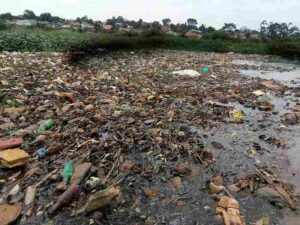
Mechanisms of Population Alteration through Human Impacts
Mechanisms and concepts associated with human impacts on ecological populations include; habitat destruction, overharvesting, introduction of invasive species, pollution, climate change, disease transmission and conservation efforts.
Human-driven phenomena, such as urbanization, agriculture, and infrastructure development, often result in total habitat destruction, or fragmentation. This directly affects the populations of species that are reliant on the affected habitats, and can lead to local extinctions.
The overexploitation of resources for human consumption, including overfishing, logging and hunting, can reduce populations to unsustainable levels. This can result in population declines, reduced reproductive success, and increased vulnerability to other threats.
Human-mediated introductions of non-native species into ecosystems can have devastating effects. Invasive species can outcompete, prey on, or otherwise harm native populations, leading to population alterations and declines.
Pollution from various sources, like industrial discharges, agricultural runoff, and plastic waste, can negatively impact the vitality and reproductivity of species, often leading to population alterations and declines.
While climate change is influenced by both human activities and natural factors, human contributions, such as greenhouse gas emissions, constitute a significant driver. Climate change can directly affect species' survival, reproduction, and distribution, altering populations in various ways.
Some human activities can facilitate the transmission of diseases between species, including zoonotic diseases that are transmitted from animals to humans. Disease outbreaks, like other stressors, can lead to population declines and disrupt ecological interactions.
Lastly, humans can also have a positive impact on populations through conservation efforts. Conservation measures, such as habitat restoration, area protection, and captive breeding programs, can help populations to recover from declines caused by other human impacts.
Conclusion
Biotic factors that affect population are;
1. Competition
2. Primary Production
3. Seed Dispersal
4. Natality
5. Predation
6. Pathogenic Diseases
7. Adaptation
8. Human Impacts
